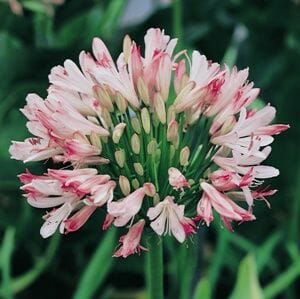Understanding the Art of Agapanthus Treatment: Crucial Actions for Healthy And Balanced Development and Vivid Blossoms
In the world of cultivation, the growing of agapanthus stands as a rewarding venture for those who look for to support these sophisticated blooming plants. With their striking flowers and stylish vegetation, agapanthus has captured the attention of gardeners worldwide. However, accomplishing optimal development and vivid blossoms calls for a nuanced technique that encompasses different necessary actions. From choosing the right variety to mastering pruning strategies, the trip in the direction of growing growing agapanthus plants is multifaceted and holds the vital to opening the complete capacity of these botanical gems.

Choosing the Right Agapanthus Variety

When selecting the right Agapanthus variety for your garden, take into consideration aspects such as environment suitability, blossom color, and growth practice. Furthermore, take into consideration the environment in your region to ensure the Agapanthus variety you select can grow in your details problems. Recognizing the growth behavior of various Agapanthus varieties is vital for proper positioning within your garden.
Perfect Planting Problems
Thinking about the optimum ecological demands is necessary for effective Agapanthus farming. Agapanthus thrives in well-draining dirt with a somewhat acidic to neutral pH level. When growing, pick an area that gets complete sunlight to partial color. In hotter climates, supplying some mid-day shade can stop scorching of the leaves. Agapanthus plants are delicate to chilly temperatures and must be secured from frost throughout cold weather.
To make sure healthy development and vibrant flowers, plant Agapanthus bulbs at a deepness of concerning 2-4 inches and space them 8-12 inches apart. Including organic matter, such as compost, to the dirt can enhance drain and fertility, advertising durable origin development. Mulching around the base of the plants helps preserve dampness and subdues weed growth. Routine watering is critical, particularly throughout the growing season, to maintain the dirt continually wet however not waterlogged.
Watering and Fertilizing Tips
Maintaining correct moisture degrees and providing important nutrients are key components in the treatment program for Agapanthus plants. When it comes to sprinkling Agapanthus, it is critical to strike a balance. These plants like regularly moist dirt but are prone to root rot if overwatered.
Feeding Agapanthus is crucial for promoting healthy growth and respected blooms. Apply a balanced fertilizer, such as a 10-10-10 formula, in the early springtime as new growth arises. By adhering to these watering and fertilizing suggestions, you can ensure your Agapanthus plants grow and produce vibrant, lasting flowers.
Pruning Techniques for Agapanthus
Trimming Agapanthus plants at the suitable times and with correct techniques is vital for maintaining their wellness and promoting optimal development and flowering. The optimal time to prune Agapanthus is in late wintertime or very early spring before brand-new development arises. Beginning see here now by removing any kind of dead or yellowing leaves near the base of the plant. Cut them as short as feasible without harming the emerging shoots.
For flowered stems, wait till the blooms have actually perished and after that cut them back to the base. This not only tidies up the plant's appearance yet additionally encourages the growth of brand-new flower buds. Deadheading invested flowers can additionally reroute the plant's energy right into creating even more blossoms as opposed to setting seeds. However, if you intend to gather seeds for breeding, leave some blossoms to mature and dry on the plant.
Bear in mind to utilize tidy, sharp tools to make accurate cuts and minimize the risk of introducing diseases. Agapanthus. Regular trimming will help maintain your Agapanthus looking cool and healthy and balanced while making certain an abundant display of gorgeous blooms
Handling Common Pests and Conditions
After making certain proper pruning strategies for Agapanthus, it is vital to resolve common parasites and diseases that can affect the health and vigor of these plants. One typical insect that affects Agapanthus is the Agapanthus gall moved here midget.
One more usual problem is fungal fallen leave spot, which offers as dark lesions on the leaves. To avoid fungal diseases, make sure good air flow around the plants, stay clear of overhead watering, and remove any type of contaminated leaves immediately. Additionally, Agapanthus plants can experience from root rot if they are grown in improperly draining dirt. To stop this, plant Agapanthus in well-draining soil and avoid overwatering. By being attentive and taking prompt action against insects and conditions, you can assist your Agapanthus plants prosper and generate lively flowers.

Verdict
In verdict, understanding the art of agapanthus care involves selecting the appropriate selection, supplying optimal growing conditions, appropriate watering and fertilizing, ideal trimming methods, and dealing with usual parasites and illness. By following these essential actions, you can make sure healthy development and vibrant flowers for your agapanthus plants. Keep in mind to regularly keep track of and keep your plants to promote their total health and longevity.
To make certain Discover More healthy development and dynamic blossoms, plant Agapanthus bulbs at a deepness of about 2-4 inches and room them 8-12 inches apart. By complying with these watering and feeding suggestions, you can guarantee your Agapanthus plants prosper and create vivid, lasting blossoms.
One common bug that influences Agapanthus is the Agapanthus gall midge. Furthermore, Agapanthus plants can suffer from root rot if they are planted in inadequately draining soil. By adhering to these important actions, you can make sure healthy and balanced development and vibrant blossoms for your agapanthus plants.